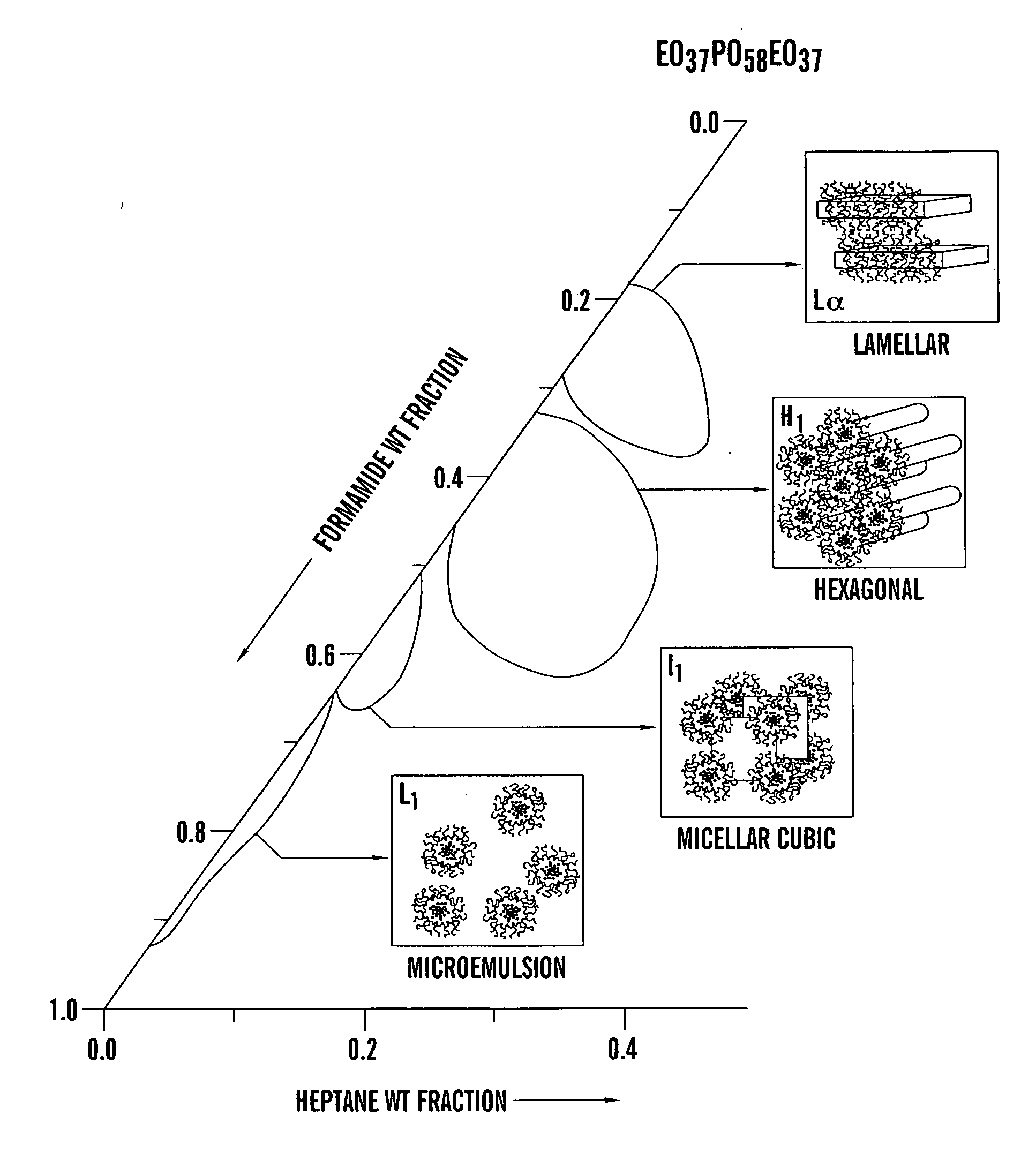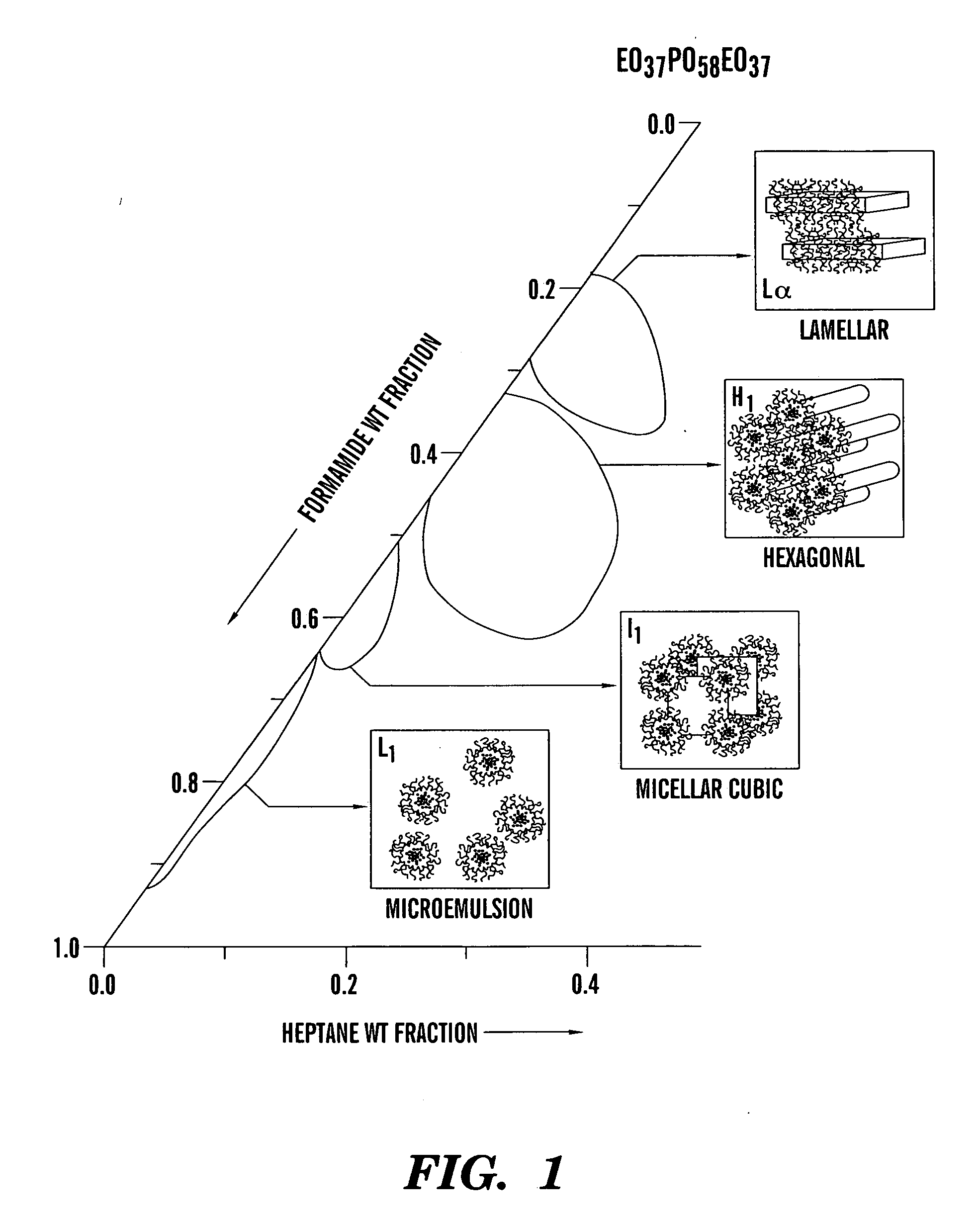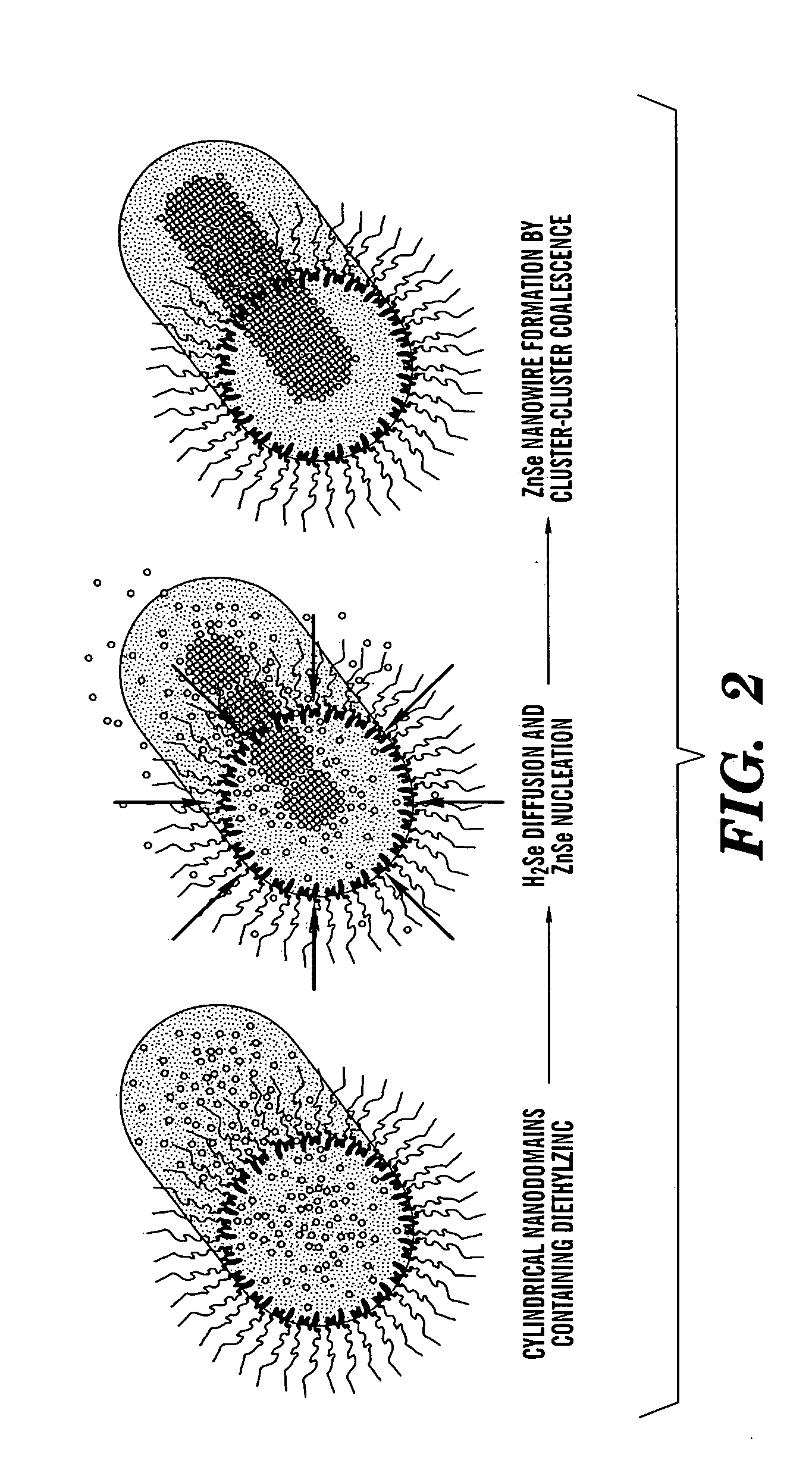Controlled synthesis of nanowires, nanodiscs, and nanostructured materials using liquid crystalline templates
a technology of nanowires and templates, applied in the direction of chemistry apparatus and processes, oxygen/ozone/oxide/hydroxide, nanowires, etc., can solve the problems of difficult to isolate particles with a specific, pre-determined particle size, and difficulty in precisely controlling particle size distribution in such reactors
- Summary
- Abstract
- Description
- Claims
- Application Information
AI Technical Summary
Benefits of technology
Problems solved by technology
Method used
Image
Examples
example 1
Formation of Liquid Crystalline Templates Using Formamide and Heptane
[0072] A mixture composed of 47 wt % PEO-PPO-PEO, 52 wt % formamide, and 1 wt % η-heptane was used to produce a cubic liquid crystalline phase. Using the above mixture composition, a total mass of 1 gram was used, which corresponded to 0.47 g PEO-PPO-PEO, 0.52 g formamide, and 0.01 g η-heptane. The diethylzinc concentration in the heptane can be manipulated in order to control the final nanocrystal size. In this particular example a 1 M diethylzinc concentration in η-heptane was used, however the concentration of diethylzinc in η-heptane can range from 0.0001 M to 10 M. It is possible to tune the diethylzinc concentration in heptane to any value in order to obtain a desired final nanocrystal size, i.e. more diethylzinc in η-heptane equals a larger nanocrystal. The sample was prepared inside glass vials equipped with a septum cap. A glove bag (AtmosBag, purchased from Aldrich) filled with N2 was used to mix the com...
example 2
Templated Synthesis of ZnSe Nanostructures
[0076] A septum vial containing a liquid crystal template according to the present invention, whose thickness was approximately 1 mm, was placed inside a reactor. The reactor was a tubular stainless steel chamber with a diameter of 1 inch that was used to accommodate the vial containing the template. The air was removed from the system by a pulling vacuum for 15 min and a subsequent 20 min flow of N2 into the system. The reactor was equipped with an inner tube with a diameter of ¼ inch that was used for the transfer of gas. Under 1 atm of N2, the reactor inner tube was inserted into the vial through the septum, which allowed contact between the liquid crystal and the surrounding gas. The N2 was subsequently removed by evacuation, and the reactor immediately backfilled with a 5% H2Se in H2 gas mixture, at room temperature, until a pressure of 1 atm was obtained. A 6-hour contact between H2Se and the Zn-doped liquid crystal was found to be su...
example 3
Synthesis of ZnSe Quantum Dots
[0080] TEM images of the synthesized ZnSe quantum dots using different liquid crystal compositions are shown in FIGS. 3A-D. FIGS. 3A and 3B correspond to a template composition of 40 wt % EO37PO58EO37, 58 wt % formamide, and 2 wt % of 1 M diethylzinc solution in heptane, while FIGS. 3C and 3D correspond to a template composition of 47 wt % EO37PO58EO37, 52 wt % formamide, and 1 wt % of 1 M diethylzinc solution in heptane, which fall inside the cubic micellar region of the phase diagram shown in FIG. 1. Using these liquid templates, the production of the nanostructures was completed as described above. The synthesized nanocrystals have an average diameter of ˜3 nm. In order for the TEM analysis to be carried out, the liquid crystal template containing the nanocrystals was dispersed in ethanol, a few drops of the dispersion were placed on a TEM grid, and the solvents were evaporated in a fume hood. After solvent evaporation, the first sample, prepared fr...
PUM
 Login to View More
Login to View More Abstract
Description
Claims
Application Information
 Login to View More
Login to View More - R&D
- Intellectual Property
- Life Sciences
- Materials
- Tech Scout
- Unparalleled Data Quality
- Higher Quality Content
- 60% Fewer Hallucinations
Browse by: Latest US Patents, China's latest patents, Technical Efficacy Thesaurus, Application Domain, Technology Topic, Popular Technical Reports.
© 2025 PatSnap. All rights reserved.Legal|Privacy policy|Modern Slavery Act Transparency Statement|Sitemap|About US| Contact US: help@patsnap.com



